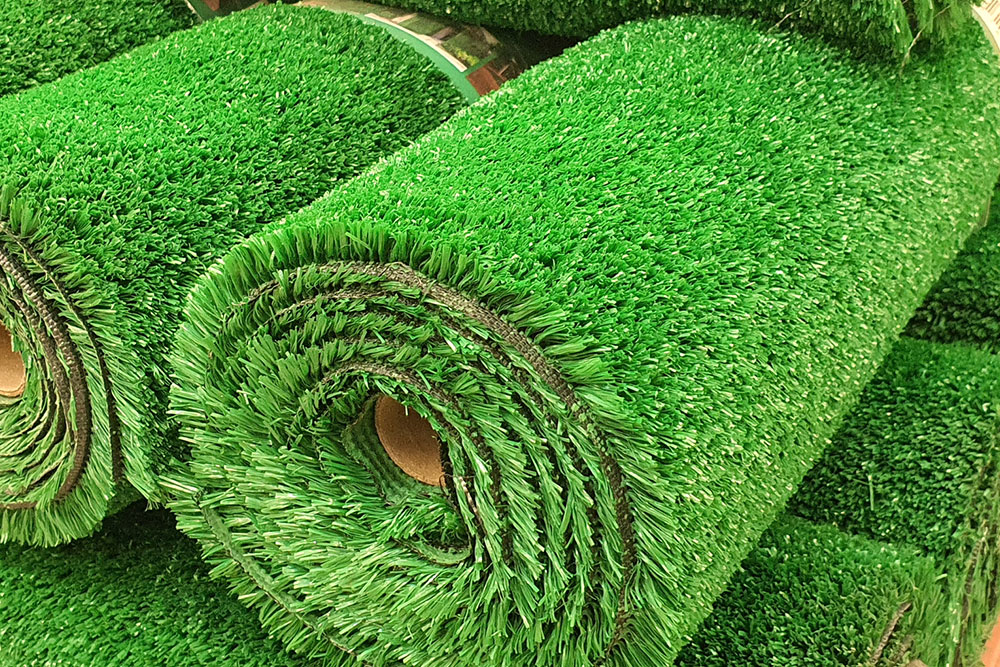Artificial Grass – Cost, Benefits, and Care Tips
Technological advancements have now made it possible to design and manufacture artificial grass. Although it is made using synthetic materials, it still looks and feels like real grass. Moreover, the artificial grass is easy to maintain, making it a popular installation in many indoor and outdoor spaces. It is also a great lawn choice for creating a lush green lawn in areas where natural grass may be difficult to grow.
Types of artificial grass
Artificial grass can be classified into different types based on the key material used to manufacture it. Here are three examples:
- Nylon
Nylon is the strongest and most commonly used material.

Homeowners prefer a polyethylene blend. This type of artificial grass is available in various textures, colors, and thicknesses. It’s ideal for homes with pets because the material is non-porous, meaning it won’t absorb liquids or unpleasant odors that linger. Some athletic fields, such as baseball and football stadiums, also use polyethylene turfs, thanks to their easy and versatile installation.
Polypropylene is another material for manufacturing artificial grass. However, it’s not the most common because polypropylene is less durable and pretty expensive to install.
Benefits of artificial grass
Artificial grass has several benefits over natural grass. Here are the key reasons why it’s best suited for residential and commercial applications:
- Temperature resistant
Artificial grass is made using materials that are both heat- and frost-resistant. It can withstand many harsh weather elements in different regions of the country. - Prevents waterlogging
This grass offers perforation. In simple words, it ensures liquids easily flow through it and drain out from the corners, preventing waterlogging. It’s an excellent option for driveways, where the water backwash can quickly drain. - Nonflammable
Artificial grass is also made using nonflammable materials, so there’s no chance of it catching on fire when exposed to extreme heat in the summer. The synthetic blends are designed to deflect heat and dissipate the temperature evenly. - Stain resistant
Some artificial grass sheets use stain-resistant materials, so spills or discoloration can easily be wiped or washed off. This makes it an ideal installation for homeowners with pets who can leave things a bit messy. - Versatility
This grass can be manufactured for different uses. For example, homeowners can shop for playground grass that is ADA-compliant or safe for children to play on. Alternatively, one can invest in pet yard artificial grass made with non-porous material that quickly drains out excess fluids. Furthermore, the grass can be designed for home lawns, sports grounds, or just for decoration!
Cost of artificial grass
The cost of installing artificial grass will directly vary depending on the area covered, the material, and installation charges. The material has a significant say in the matter. Here are some approximates of the total cost based on recent market trends:
- Polypropylene
Polypropylene grass, the most affordable but slightly less durable variant, is suitable for indoor decoration and brightening dimly lit areas. The average cost per square foot varies between $1.90 and $6.75 for residential purposes. - Polyethylene
Polyethylene artificial grass is built for more rugged outdoor use and looks more real. Its texture and material are also softer than nylon and polypropylene. The average cost per square foot varies between $2.55 and $3.85. - Nylon
Nylon is one of the most commonly used materials, best suited for rugged outdoor use. It can withstand hot, cold, and even wet conditions. This is also one of the main reasons nylon is the most expensive of the lot, with an average cost between $5.05 and $5.83 per square foot.
Here are a few other factors that affect the cost of artificial grass:
- The quality of the grass will vary depending on the manufacturer, with premium brands demanding higher prices.
- The size and shape of the grass blades will also affect the cost.
- The bigger the size of the installation, the more material and labor required. Consequently, the cost increases.
- The shape of the installation will also affect the cost as more materials and labor will be needed to modify the contours and edges. This is especially the case with complex shapes that require careful planning.
- Even the location of the installation will affect the prices, depending on contractor charges.
Tips for installation and maintenance
A lot of research is necessary when installing artificial grass. Homeowners must consider the yarn, density, pile height, face thatch, infill, backing, color, and sub-base before choosing a particular type of grass. It’s better to request quotes and compare them with vendors offering similar services.
Once installed, artificial grass requires some amount of maintenance. Here are a few tips:
- Clean up spills quickly and promptly so the stains don’t have time to set.
- Use strong liquid with a soapy base to clean stubborn grease, ink, or oil stains.
- Aerosol refrigerants and dry ice are quite effective in hardening and removing sticky stains.
- Let pet feces dry before scraping them off; use only cool water to wash the stains.
- Invest in essential lawn care tools to take care of the artificial grass.

